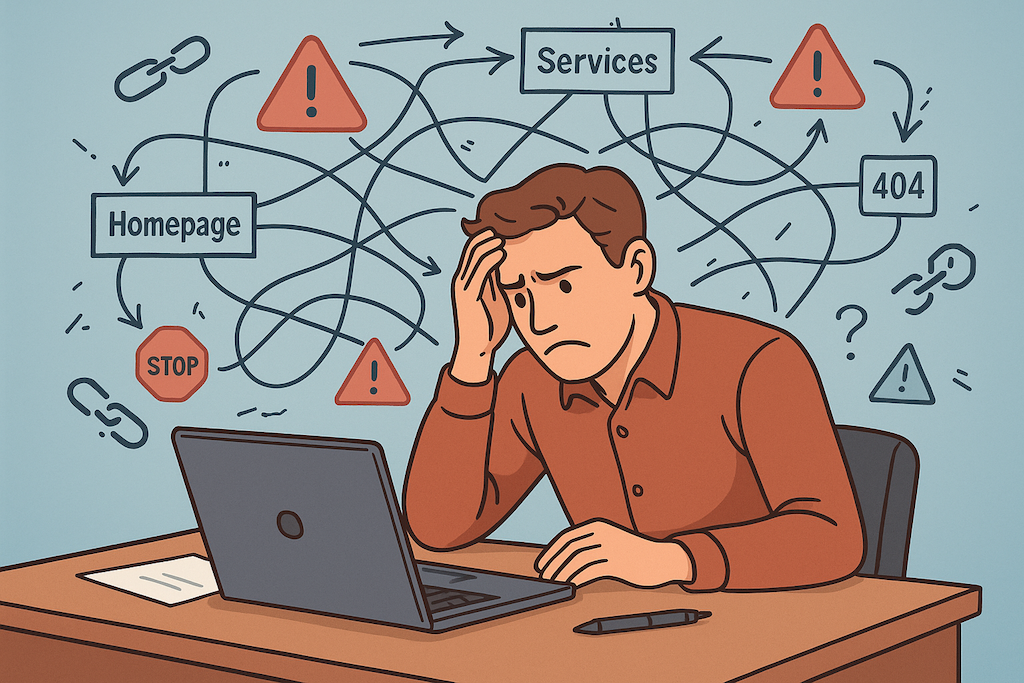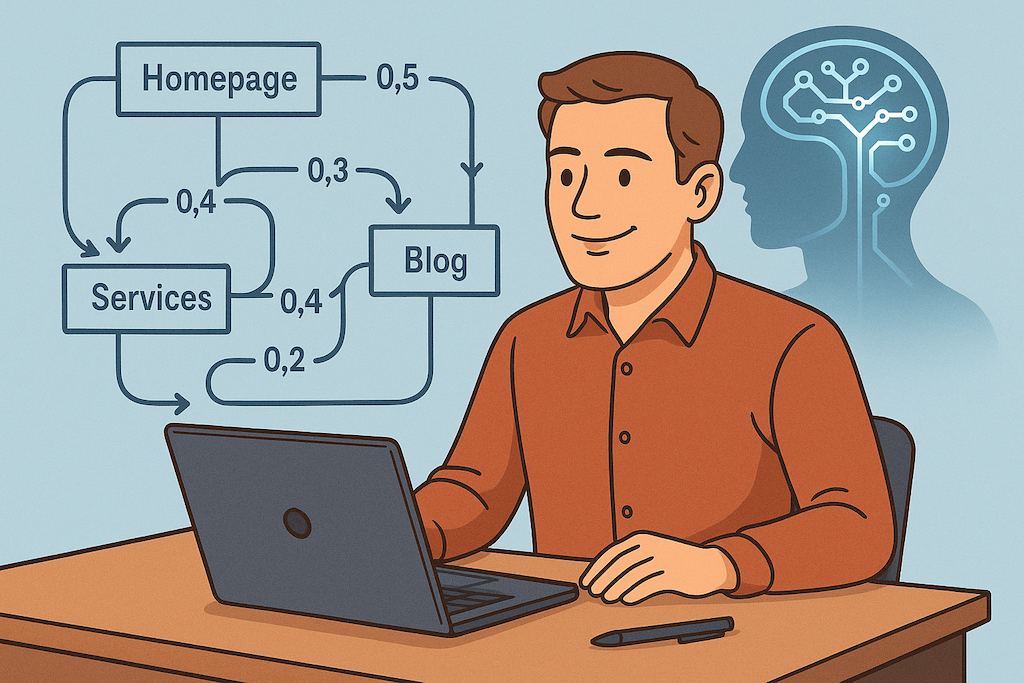Understanding more – Introduction
When a visitor lands on your website, every click they make tells a story. Some stay, explore, and convert. Others bounce within seconds. The question is: how can you predict and optimize this flow of behavior? Rescue your online presence with our re-design services
This is where Markov chains, combined with AI insights, come into play. Instead of guessing how people navigate your site, you can model user journeys mathematically and use AI to improve your site’s structure, calls-to-action, and overall experience.
At WebsiteSOS.net, we specialize in rescuing websites from chaos. Let’s explore how this model can help you not just fix, but truly understand and optimize your website flow.
What Is a Markov Chain (In Plain English)?
A Markov chain is a way of modeling the probability of moving from one “state” to another. In a website context:
-
A state = a page on your site.
-
A transition = when a visitor clicks from one page to another.
-
A transition probability = the likelihood that a visitor on Page A will move to Page B.
For example:
With a Markov chain, you can represent these flows as a matrix and start predicting where traffic will end up over time.
Why Does This Matter for Websites?
-
Pinpoint Drop-Offs: You can see where most users abandon the flow (e.g., checkout page).
-
Prioritize Fixes: Instead of guessing, you know which page transitions hurt you the most.
-
Optimize Navigation: If users rarely transition from a blog post to a service page, you may need better CTAs.
-
Predict Long-Term Behavior: You can simulate what will happen if traffic continues for many steps (stationary distribution).
This is exactly how modern search engines like Google think about websites—link structures and probabilities of movement between them.
The Role of AI in Website Flow
While a raw Markov chain is powerful, AI takes it further:
-
Pattern Recognition
AI models (like embeddings) can cluster user journeys into types: researchers, buyers, one-time visitors.
-
Predictive Adjustments
By running simulations, AI can test “what if” scenarios:
-
Automated Recommendations
AI tools can digest Markov chain outputs and suggest navigation or design tweaks instantly.
-
Personalized Flow
AI can recognize the type of visitor (new vs returning, mobile vs desktop) and optimize the transitions they’re most likely to take.
A Simple Example for WebsiteSOS.net
Let’s say we map a basic flow:
From the services page:
This creates a transition matrix. Running it through Markov analysis, you’d find the stationary distribution (the long-term probabilities of where users end up).
-
If 40% eventually land on your contact form, that’s good.
-
If only 5% ever see your contact form, you know your funnel is broken.
With AI, you can automate this analysis daily or weekly, constantly adjusting the flow to improve conversions.
Practical Steps to Implement This on Your Website
-
Collect Data
-
Build Your Markov Model
-
Represent pages as states.
-
Calculate transition probabilities (e.g., visits from Page A → Page B ÷ total visits from Page A).
-
Run the Analysis
-
Overlay with AI
-
Use clustering to group visitor types.
-
Train models to predict “likely next clicks.”
-
Test AI-driven improvements (e.g., recommend content, adjust CTAs).
-
Take Action
-
Fix broken flows (low transition to conversion pages).
-
Restructure navigation where users stall.
-
Test variations (A/B or AI-assisted multivariate).
Where Markov Chains Shine in SEO
Here’s the bonus: this isn’t just UX—it’s also SEO gold.
-
Internal Link Optimization: Markov chains resemble PageRank, which Google still uses. By optimizing internal flows, you align your site with how Google interprets authority.
-
Content Hubs: You can see if your “pillar pages” actually distribute authority to supporting pages.
-
Bounce Reduction: By improving flows, dwell time increases, signaling quality to Google.
Real-World Use Cases
-
Ecommerce: Predict checkout abandonment and redesign checkout flow.
-
SaaS Websites: Optimize free-trial journeys—homepage → pricing → signup.
-
Blogs: Map reader journeys and improve transitions to lead magnets.
-
Local Businesses: Ensure “Book Now” or “Contact Us” pages get reached quickly.
Conclusion
Markov chains may sound mathematical, but their application to websites is straightforward: they help you understand how people move through your site. Pair that with AI, and you gain a living, breathing optimization engine that adapts to your visitors in real time.
At WebsiteSOS.net, we don’t just rescue broken sites—we help you optimize them for long-term success. Whether it’s repairing technical SEO issues, fixing user experience dead-ends, or building smarter flows, our goal is to turn chaos into clarity.
So if your website feels like a maze with no exit, maybe it’s time to run the numbers—and let AI guide your visitors exactly where you want them to go.


